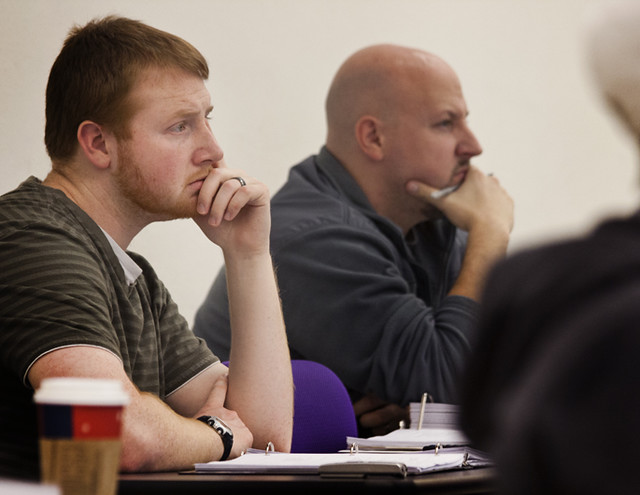What to Expect at Idaho CCW Classes

This is a common question and justifiably so regarding a firearms class.
Level 1 Firearms Training Instructors are highly trained, professional, and thorough when conducting firearms training. They are certified firearms instructors who meet only the highest standards to conduct the Idaho Enhanced Concealed Carry Class through Level 1 Firearms Training.
Idaho Enhanced Concealed Carry Class Topics
- Firearm Safety
- Gun Safety Rules
- Firearm Parts and Operations
- Essential Shooting Concepts
- Ammunition Knowledge
- Care and Maintenance of your Firearm
- Addressing Gun Malfunctions
- Interstate and Intrastate Transportation Laws
- Airplane Travel and the Law
- Purchases, Transfers, and Sales of Firearms
- Idaho Police Concealed Carry Interactions
- How to deal with the Idaho Police
- Duty to inform Idaho Police about your Enhanced Concealed Carry Permit
- Idaho Open Carry Laws
- Idaho Concealed Carry Laws
- Beast Idaho Concealed Carry Options
- In waistband, outside waistband, appendix carry, and Purse Carry Options
- Essential Idaho Self-defense options
- The 5 Levels of Idaho threat assessments
- De-escalation techniques that work in Idaho
- Idaho and The Law: Use of Deadly Force
- Explaining Idaho Brandashing Laws
- Idaho State Concealed Carry Laws
- Federal Concealed Carry Laws
- Your rights as an Idaho Concealed Carry Permit Holder
- The Idaho “Castle Doctrine” and what it means
- Idaho’s “Stand Your Ground Doctrine” and what it means
- Idaho Stand your ground laws
- Idaho Duty to Retreat Laws
- Suicide Prevention
- More
What to Expect from the Idaho Enhanced Concealed Carry Class
This class provides a comprehensive overview of your responsibilities as an Idaho citizen. The class is open to all interested persons who want to become responsible Idaho Firearms Permit holders and want to tell others about their responsibilities as licensed concealed carry permit holders.
In addition to the training topics listed above, there is a rabe qualification drill. Students must be able to handle their guns and fire at specified targets safely. The minimum round count is 98 rounds per student.
Items to Bring
The following is a list of items the student should bring to class.
Day 1: Classroom – Saturday
- Notepads, pens, paper, highlighter.
- A personal revolver or pistol of any caliber, cased, secured, and free of ammunition.
- Strong-side Holster, Appendix Holser, or Holster Purse: Preferably the one you intend to use when you carry concealed.
- No Serpa Holsters Allowed
- Training Cartridges (Dummy Rounds): At least 5 Training Cartridges in the correct caliber are needed for this class.
- Can be found at local sporting goods stores or online.
- Suitable Eye Protection. This can be wraparound eyewear, polycarbonate lenses, or non-shattering prescription glasses.
- Suitable Ear Protection. We recommend electronic noise-canceling earmuffs, but earplugs are acceptable.
- Approxiament Length: 6 Hours
Day 2: Range Day – Sunday
- A personal revolver or pistol of any caliber, cased, secured, and free of ammunition.
- Strong-side Holster, Appendix Holser, or Holster Purse: Preferably the one you intend to use when you carry concealed.
- No Serpa Holsters Allowed
- Training Cartridges (Dummy Rounds): At least 5 Training Cartridges in the correct caliber are needed for this class.
- Can be found at local sporting goods stores or online.
- Suitable Eye Protection. This can be wraparound eyewear, polycarbonate lenses, or non-shattering prescription glasses.
- Suitable Ear Protection. We recommend electronic noise-canceling earmuffs, but earplugs are acceptable.
- Range Fees, if any, are the student’s responsibility and are not included with the course registration.
- Check the weather report on the day of class and bring appropriate clothing.
- Wear appropriate clothing for the weather.
- Bug Spray for the critters.
- No V-Neck Shirts or Open-toed shoes.
- Head covering if necessary.
- Sunscreen or jackets when needed.
- Suitable and Comfortable Footwear, no open-toed shoes are allowed.
- Beverages for Hydration.
- Bring snacks for breaks. Snacks – Are allowed at the range – snacks are not allowed on the firing line.
- 150 Rounds of Quality, store-bought ammunition (no tracers, steel, or reloads allowed).
Optional but highly recommended:
- Knee Pads – for range day and private shooting drills afterward.
- Small Personal Canopy during the summer season when temperatures are expected to be high.
- Folding chair and a small folding table to create your workstation (bench).
- Approxiament Length: 2 Hours.
